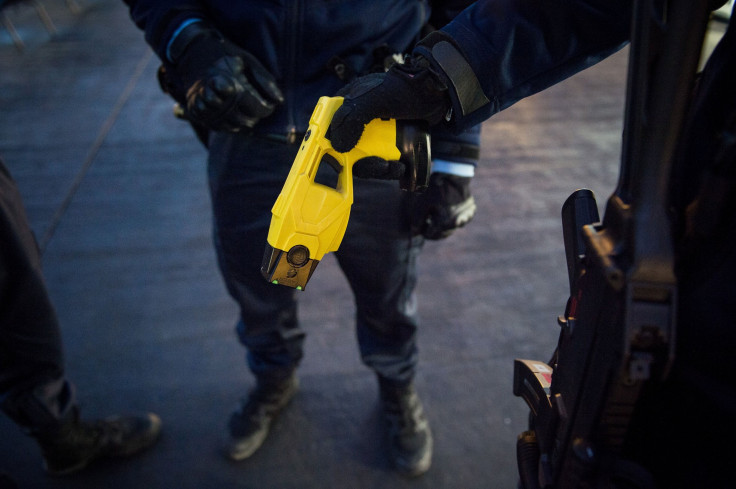Video Shows Man Catching Fire When Tasered By Police, Even As Manufacturer Axon Tries To Rebrand

A video posted on social media this week showed a disturbing scene of a man in Paris catching fire after police use a taser on him.
After the man appears to be taunting police, one officer uses tear gas on him while another simultaneously fires a Taser conductive energy weapon (CEW). The flammable tear gas reacts with the CEW and the man briefly catches fire, screaming in pain. The incident in the Paris video, recorded on an officer’s body camera, occurred in 2013 but was not made public until now.
The CEW model in use in the video was manufactured by Axon, formerly known as Taser. The company rebranded itself last year as Axon in an effort to focus on its Axon brand of police body cameras rather than the CEWs, which have been involved in several injuries and fatalities over the years.
The incident, albeit from several years ago, highlights the challenge for Axon as it tries to focus its growth and public attention on body cameras rather than its Taser CEWs, which have the potential to be associated with such events and the negative attention they draw.
In Axon’s most recent annual report filed with the Securities and Exchange Commission, the company noted the risk to its reputation — and therefore its bottom line — from injuries caused by its CEWs. “We may face personal injury, wrongful death and other liability claims that harm our reputation and adversely affect our sales and financial condition,” the company wrote to shareholders. “Our CEW products are often used in aggressive confrontations that may result in serious, permanent bodily injury or death to those involved. Our CEW products may be associated with these injuries.”
While Axon sees body cameras as its long-term business future, there is still a lengthy period before it secures enough contracts with enough law enforcement agencies for its software as a service model to generate profits at a rate to satisfy shareholders. In the interim, CEW sales are expected to make up the shortfall. With dominant market share already in the US, Axon can only substantially grow its weapons sales abroad — which is precisely what they have done.
“Our record revenue in the quarter was driven by strength across our product segments including strong international weapons revenue growth,” CEO Rick Smith told shareholders on the third quarter’s earnings call.
As of mid-2016, Axon (then still known as Taser) had only 2 percent of the CEW market share in Europe. However, it appears that the company’s contract with Paris police goes back to at least this incident in 2013. The company also chose Paris as its base of operations when seeking to expand international sales in Europe, with CEO Rick Smith relocating there for several months.
“TASER warnings, training manuals and instructor trainings since day one have specifically warned about introducing an electrical weapon into a flammable environment to prevent serious injury or death,” Steve Tuttle, Axon’s Vice President for Communications, told International Business Times in an email. “These occur very rarely with 16 incidents out of 3.54 million field uses involving flammability issues. Some of these resulted in minor to serious injuries and tragically some have resulted in five deaths.”
The model used in the video appears to be the Taser X26P. The image below shows a screenshot from the video side by side with an image of the X26P from Axon’s product page.

Despite the relatively rare occurrence of such incidents, Axon is aware of the danger they pose to the company’s business and in part that risk explains the company’s desire to shift both its business model and its name away from Taser-brand CEWS that carry the risk of causing injury or death.
Although Axon gives warnings and trainings against the dangers of using tear gas in conjunction with Tasers, experts warn that when police are outfitted with so many different weapons they may feel inclined or even pressured to use them.
“It is well known that chemicals in police aerosol sprays are flammable,” Dr. Anna Feigenbaum, author of “Tear Gas: From the Battlefields of WWI to the Streets of Today” told IBT. “Yet because officers are equipped with so many different devices, they can feel pressured to use them — or more cynically, excited to test them out and see what they do.”
© Copyright IBTimes 2025. All rights reserved.





















